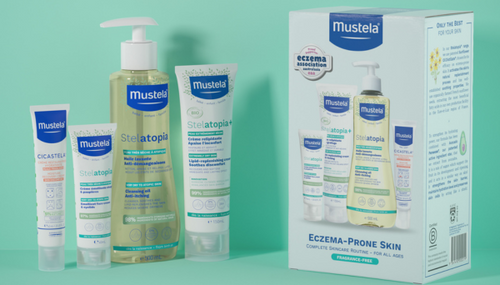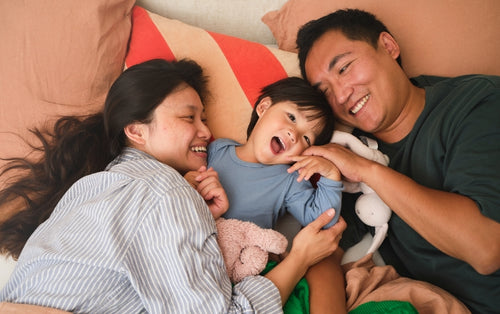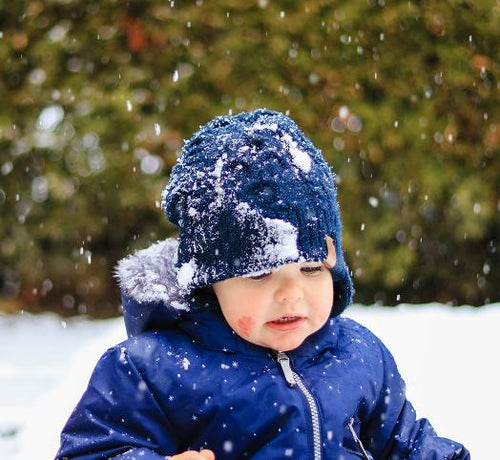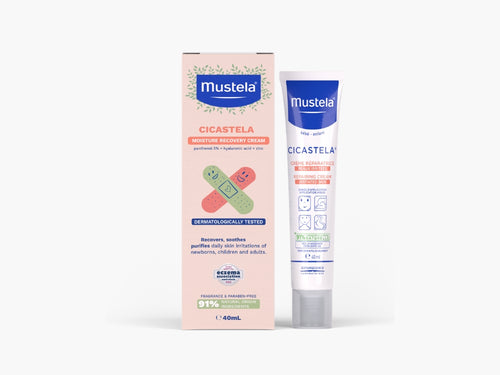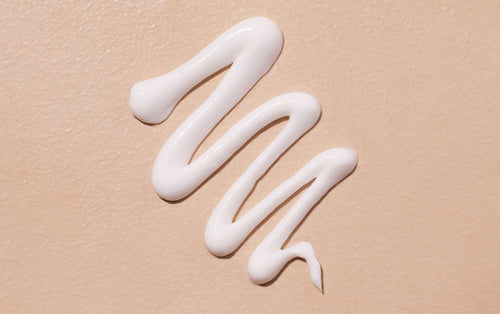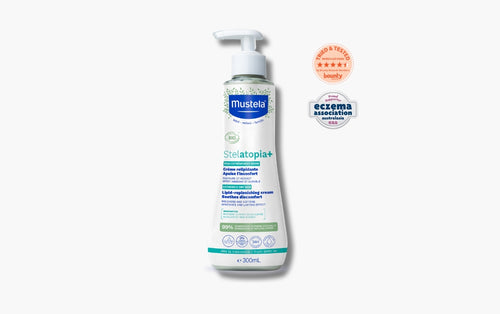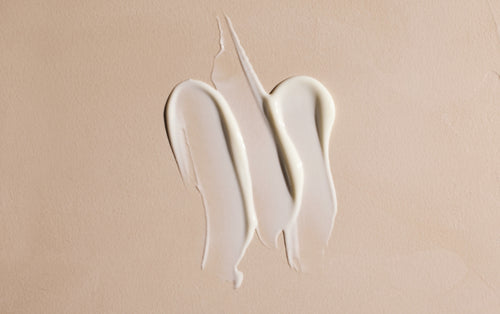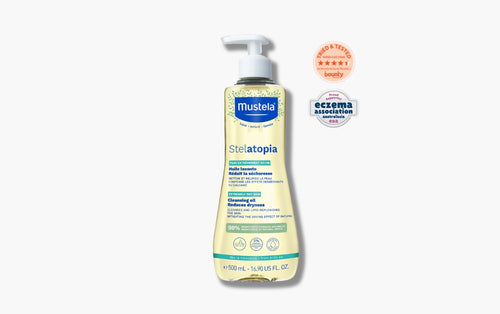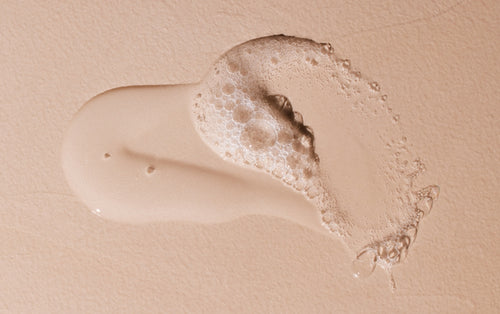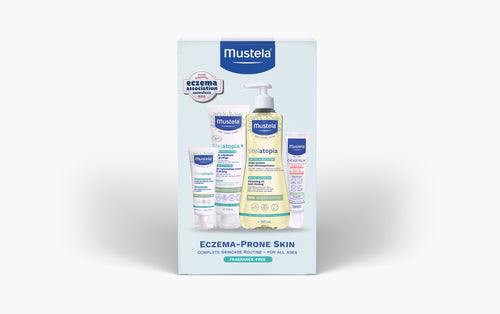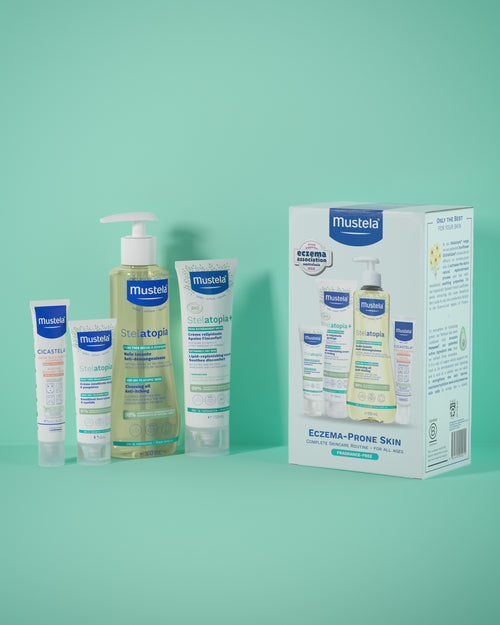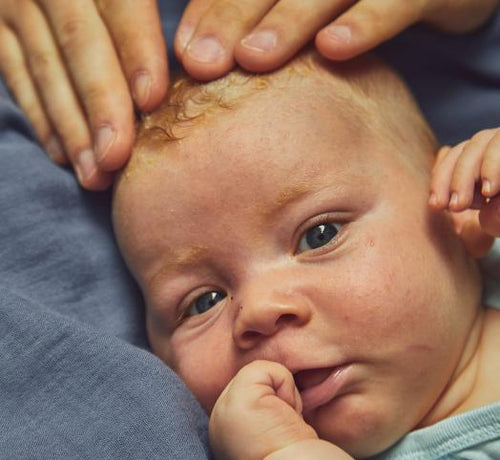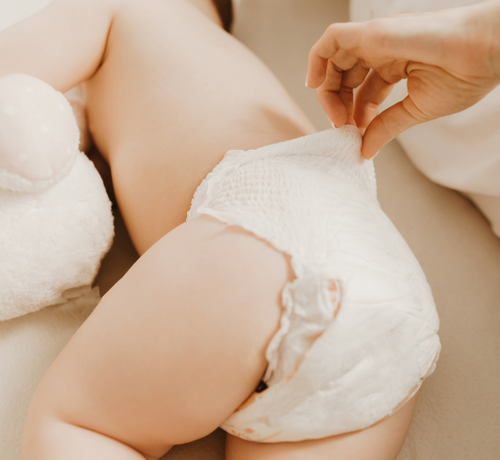Climate and seasons: Do they influence eczema-prone skin?
Climate can influence your baby's eczema-prone skin's appearance and the occurrence of flare-ups.
To understand the extent, there is a simple observation: eczema-prone skin particularly likes everything that can dry the skin, make it sweat or put it in contact with allergens (see Eczema: how to spot and prevent it?). The wind can contribute to eczema-prone skin due to its drying effect, but that doesn't mean that a wet or temperate climate is its best friend either. However, a damp environment enables the skin to preserve hydration, and a temperate climate keeps us from being too hot.
Prevent eczema-prone skin flare-ups in every season.
Each season has its advantages and drawbacks.
• The strength of spring...
...its temperatures. Not too hot, not too cold, they are a delight. Unfortunately, it is also the pollen season, especially when you care for your garden, mowing the grass. The smell of cut grass is an absolute pleasure, but it can irritate the skin. Make sure to:
- Reduce outdoor activities for your child or minimise their duration to avoid extended contact with pollen if your child is sensitive to it.
- For the same reason, you should avoid hanging your child's laundry outside to dry.
- It would help if you chose trousers or long-sleeved T-shirts that protect your child's legs and arms from potential irritants.
• In summer...
...the sun comes out – great news for the skin! Indeed, it has some beneficial effects on eczema-prone skin; this is due to the phototherapy principle: it has been found that eczema-prone skin is less frequent in regions where the UV index is higher. However, be careful of sunburns and heatstroke. You must make sure to:
- Always thoroughly protect your child's skin with a baby/child-specific, fragrance-free, very-high protection sun lotion with a high SPF, suitable for eczema-prone skin. We don't think about it, but even in the city, the face, arms and calves can be sun-exposed, so:
- Limit trips outdoors when the sun is at its height.
- Choose activities that don't make your child sweat too much. (See Pool, sport, playing: which activities are OK for my eczema-prone child?)
- Apply his emollient treatment as often as necessary.
• Then comes autumn...
...It is the end of high heat and isn't yet very cold, and pollen isn't an issue. Nothing in particular needs to be pointed out: just enjoy this pleasant off-season!
• Winter is coming...
...Even if it is cold, it is a relatively quiet season. And yet:
- When harsh, the cold air has the same drying effect as heat.
- By the way, to deal with the lowest temperatures outside, we tend to cover ourselves up too much and end up sweating, which can create itching sensations!
- Your child has to wear an anorak or jacket, of course. Still, you can also try to layer on some soft clothes (a vest, for example) to enable him to adapt to the temperature difference once he has arrived at the nursery or the nanny's place (see What should be worn with an eczema-prone skin?).
- When the heater is too hot, dry air also contributes to dry skin, outside and inside.
Winter is not the enemy, but it is the period that requires the most attention. However, your baby/child-specific emollient care will always be an excellent defence for the skin.


